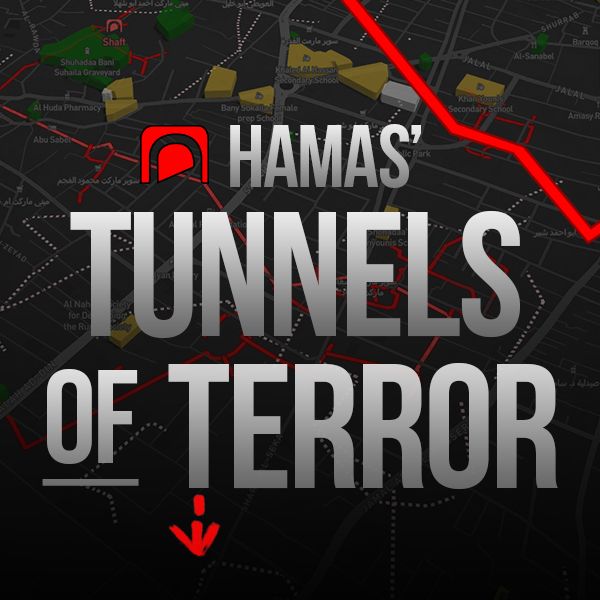The Trump-brokered ceasefire between Israel and Hamas is expected to go into effect imminently. According to timelines being reported, Israel’s Security Cabinet will meet on the evening of Thursday, October 9, to approve the release of Palestinian prisoners in exchange for the remaining Israeli hostages still held by Hamas.
Once the deal is approved, the IDF will begin withdrawing to a pre-agreed point within 24 hours, pulling remaining forces out of Gaza City but maintaining control over roughly half of the Strip. When the withdrawal is complete, Hamas will have a strict 72-hour deadline to release the hostages – quietly, and without the orchestrated “public ceremonies” that have previously served as propaganda spectacles.
Israeli officials have already clarified that no Nukhba operatives involved in the October 7 massacre will be freed, nor the notorious terrorists Hamas has repeatedly demanded.
That’s the deal on paper. But in practice, another battle will unfold – on your screens. Because if previous exchanges have taught us anything, it’s that the media plays a decisive role in shaping how the world understands who the “victims” are.
This is where media literacy matters most.
Lionizing the Loathsome
In every past hostage-for-prisoner exchange, major outlets like CNN and the BBC devoted disproportionate attention to Palestinian prisoners — many of them convicted murderers — being “joyously” welcomed home.
Coverage was often framed as emotional reunions rather than the release of violent offenders. Headlines paired photos of smiling families with vague descriptions that made both sides of the exchange sound morally equivalent: Israelis reclaiming “hostages,” Palestinians reclaiming “detainees.”
This is where selective storytelling does its quiet work.
When you see an image of a Palestinian woman or teenager freed from Israeli prison, look for what’s missing. If her crime isn’t mentioned — if words like stabbing, bombing, or attempted murder are nowhere to be found — ask yourself why.
The omission isn’t accidental. It’s narrative engineering: making the release of terrorists appear as the heartwarming homecoming of innocents.
Legitimizing the Lawless
Expect language to blur moral lines.
During earlier exchanges, outlets routinely confused terms that carry moral weight. NBC News once called convicted Palestinian prisoners “hostages” – a false equivalence swiftly corrected only after HonestReporting flagged it.
“Palestinian hostages.”
Seriously, @NBCNews?!
They were imprisoned by Israel for terrorism. The only hostages are the Israelis and others kidnapped and held captive in Gaza by Palestinian terrorist orgs. pic.twitter.com/561mfmOIxs
— HonestReporting (@HonestReporting) February 1, 2025
The New York Times misidentified the released Israeli civilian Arbel Yehoud as a “soldier,” and Sky News referred to hostages Emily Damari, Romi Gonen, and Doron Steinbrecher the same way.
Words matter. When the press calls terrorists “militants,” civilians “soldiers,” and kidnappers “fighters,” it doesn’t just muddle meaning – it legitimizes barbarity. To the average reader, a “detainee” sounds like someone unfairly held. A “hostage” evokes innocence. And when both are used interchangeably, moral clarity disappears.
No, @nytimes, Arbel Yehoud is not an Israeli soldier, she is a civilian and was kidnapped from her home in Nir Oz.
Please correct the error and stop portraying Israelis as legitimate military targets for terrorists. pic.twitter.com/o754wAEu4M
— HonestReporting (@HonestReporting) January 30, 2025
Pre-Framing the Predictable
What happens if Hamas violates the deal – as it has done before?
Be prepared for the blame game.
In previous ceasefires, when Hamas fired rockets after the truce had gone into effect or refused to release hostages, headlines still found ways to fault Israel. Phrases like “Israel breaks ceasefire” or “truce collapses” appeared before anyone asked who fired first.
Expect the same template now. The media has its storyline pre-loaded: Israel will be accused of “escalating,” while Hamas’ deceit will be buried in paragraph seven.
When you read those headlines, remember this pattern isn’t spontaneous, but predictive. It’s how the press cushions readers from the uncomfortable truth that Hamas, not Israel, is determined to torpedo peace.
Final Takeaway: Stay Alert, Stay Skeptical
As the ceasefire unfolds, don’t just watch what’s shown – pay attention to what’s excluded. Which images dominate front pages? Which words are repeated? Which atrocities are quietly left unnamed?
Because in this war, the battle over perception doesn’t end when the guns fall silent. It simply shifts back to where it’s always been – the newsroom.
And if past coverage is any guide, the next “truce” will come with an onslaught of misleading headlines.
The best defense isn’t another press release. It’s an informed public – one that recognizes bias not just in what’s written, but in what’s left unsaid.
Liked this article? Follow HonestReporting on Twitter, Facebook, Instagram and TikTok to see even more posts and videos debunking news bias and smears, as well as other content explaining what’s really going on in Israel and the region. Get updates direct to your phone. Join our WhatsApp and Telegram channels!


